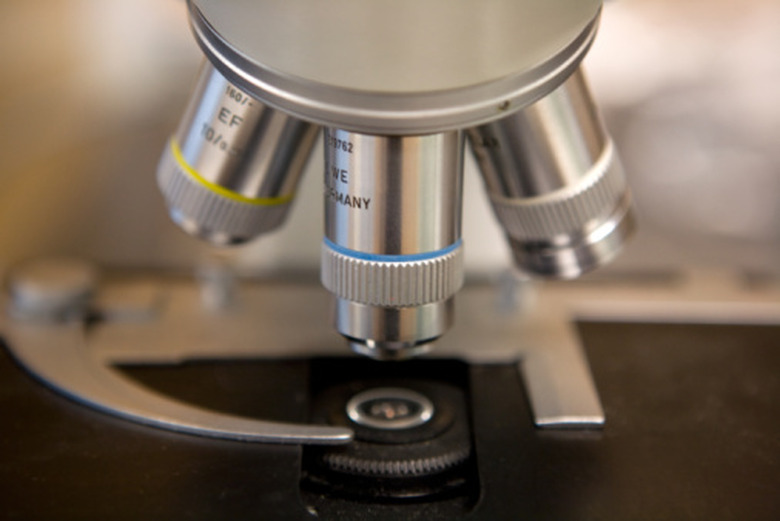How To Convert O.U. To Micrometers
When working with microscopes, it is important to understand the true size of the object you are looking at through the lens. Many microscopes contain different magnifications, which can make it difficult to estimate the true size of an object. However, using the calibration marks on the microscope which measure ocular units (O.U.), it is possible to convert these distances to the more common units of micrometers (or millionths of a meter). This conversion can be done in a few short steps.
Step 1
Place the lowest objective (or magnification) into place so you see the lowest magnification when looking through the lens of the microscope.
Step 2
Rotate the ocular micrometer (which will generally be labeled) until it is superimposed onto the stage micrometer (which should also be labeled). The forward edge of both scales should be approximately even.
Step 3
Look for a point as far away from the origin of the scales as possible where the scales overlap (that is, two ticks on the scale are located on top of one another).
Step 4
Count the spaces on each scale from the beginning of each scale to where they overlap again. The spaces on the ocular micrometer are called ocular units and the spaces on the stage micrometer are called stage units.
Step 5
Divide the number of stage units by the number of ocular units. For example, if you count 21 stage units and 29 ocular units, dividing these numbers gives 0.724. Call this ratio result A.
Step 6
Multiply result A by 10. This gives the length in units of micrometers completing the conversion between ocular units and micrometers. Continuing the example above, this gives 7.24 micrometers.
Cite This Article
MLA
Bourdin, Thomas. "How To Convert O.U. To Micrometers" sciencing.com, https://www.sciencing.com/convert-ou-micrometers-8626521/. 24 April 2017.
APA
Bourdin, Thomas. (2017, April 24). How To Convert O.U. To Micrometers. sciencing.com. Retrieved from https://www.sciencing.com/convert-ou-micrometers-8626521/
Chicago
Bourdin, Thomas. How To Convert O.U. To Micrometers last modified March 24, 2022. https://www.sciencing.com/convert-ou-micrometers-8626521/
